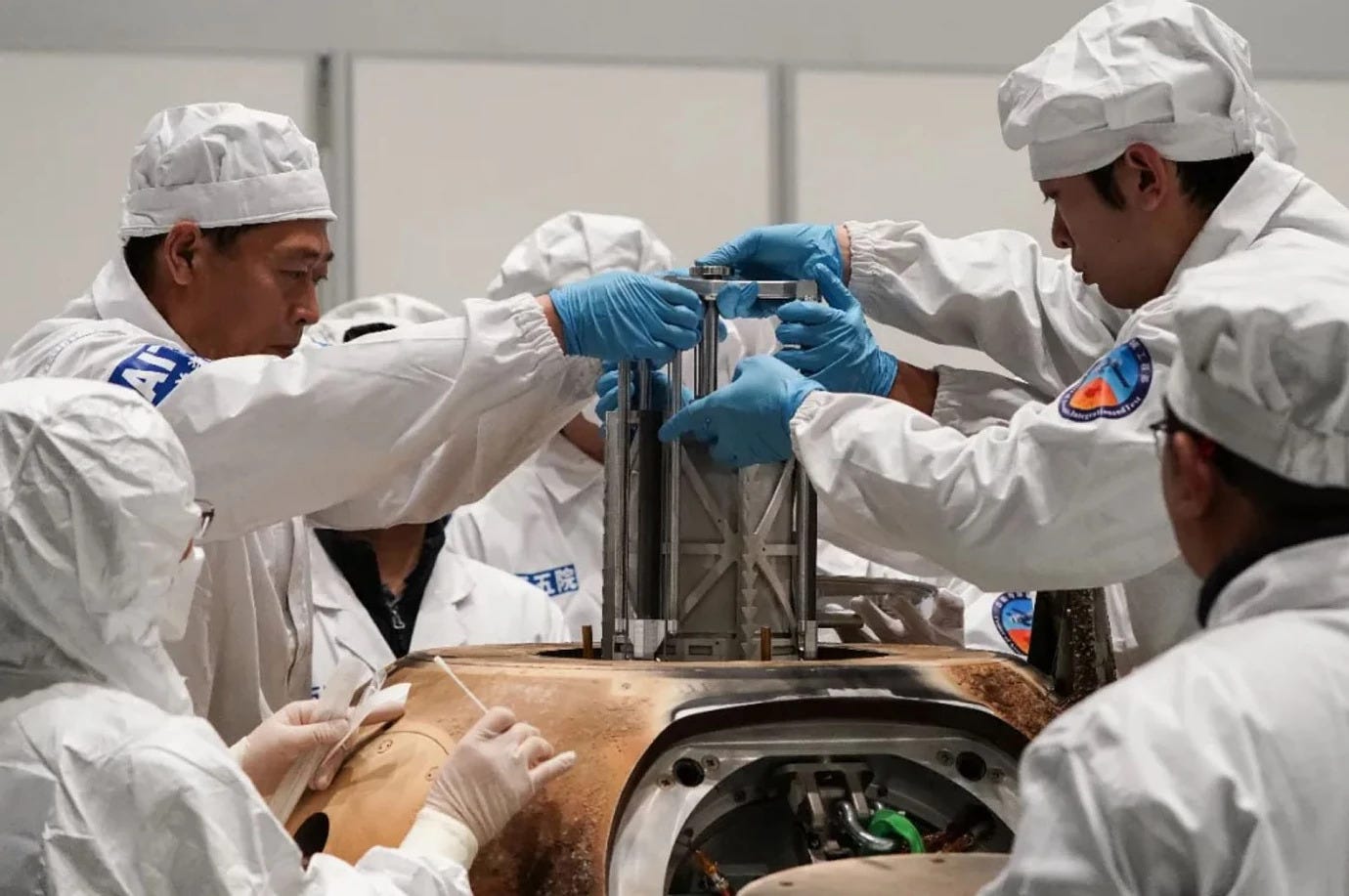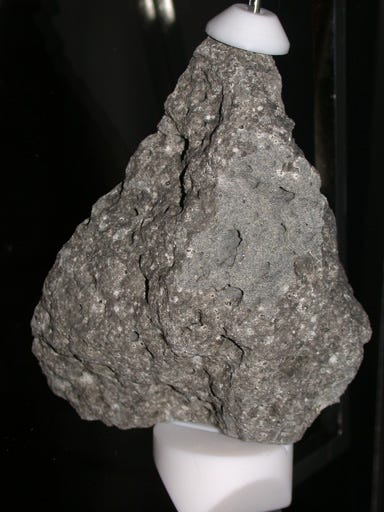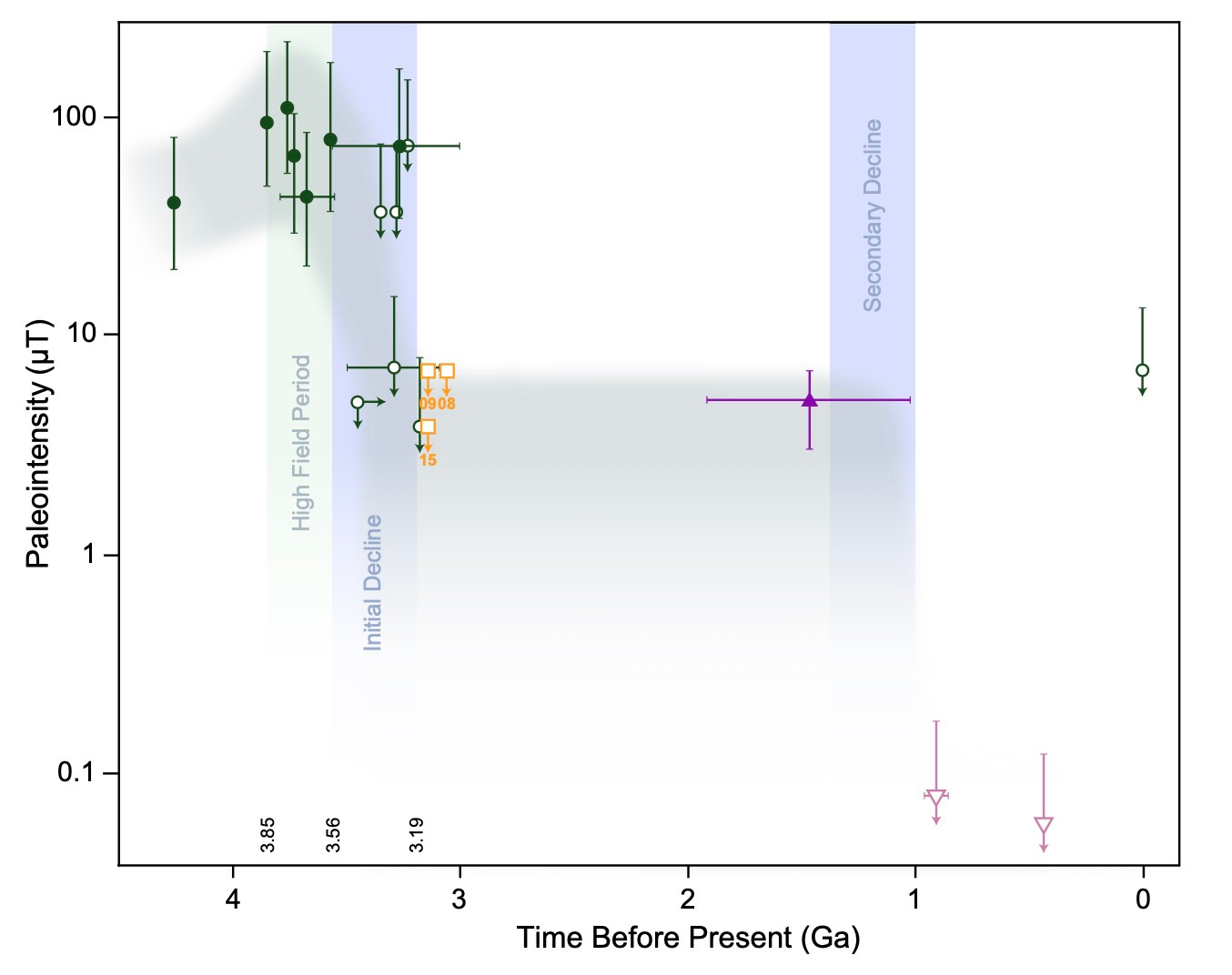Moon Monday Issue #11
China outlines availability of Chang'e 5 samples, a Moon rock sits in the White House, scientists see the Moon lose its magnetic field, and more developments in the lunar space.
Highlight

On January 19, China officially announced details of how the Chang’e 5 Moon samples will be managed by their Lunar Exploration and Space Engineering Center and made available to international scientists for study. Last week, China invited personnel from France, Russia, the European Union, Asia Pacific Space Cooperation Organization and other international entities to visit the lunar sample storage and processing facilities in the National Astronomical Observatories of China where the majority of the samples will be archived. Backup samples are stored at another yet-to-be-revealed facility, and a portion of the Chang’e 5 samples will be displayed at China's National Museum for public outreach. Following the strategy used for Apollo and Luna samples, about 20 percent of the Chang’e 5 samples will be preserved for future research when better and more advanced methods will be available. Here are some useful links:
Official notice with more details: http://www.cnsa.gov.cn/english/n6465645/n6465648/c6811126/content.html
Application Form of Research Samples: http://www.cnsa.gov.cn/n6758823/n6758839/c6811124/part/6786064.docx
Application Form of Samples for Public Outreach: http://www.cnsa.gov.cn/n6758823/n6758839/c6811124/part/6786065.docx
Lunar Sample Loan Agreement: http://www.cnsa.gov.cn/n6758823/n6758839/c6811124/part/6786066.docx
Sample Return Application Form: http://www.cnsa.gov.cn/n6758823/n6758839/c6811124/part/6786067.docx
Exploration
After an initial analysis, NASA says the early shutdown of the SLS rocket’s core engines on January 16 just 67 seconds into the hot fire test was triggered by “intentionally conservative” test parameters to ensure the safety of the core stage. NASA added that if this scenario occurred during a flight, the rocket would have continued to power through using redundant systems onboard. NASA clarified that the major component failure on engine 4 and the flash outside the same engine are non-critical issues unrelated to the hot fire shutdown, and that the rocket core stage and engines are healthy.
Two days later, NASA added that according to the team’s preliminary assessment, many of the required 23 high-level test objectives were met despite the early shutdown, and that they will evaluate if another hot fire test is needed or if SLS can fly directly for Artemis I. This is in stark contrast to SLS program manager John Honeycutt’s statement before the test which noted that NASA hoped to get at least 250 seconds worth of data to test all the objectives. Whether the SLS hot fires again or flies, the team needs to dry out and refurbish the engines first, which they’re doing.
A 3.9-billion-year old piece of the Moon now sits in the Oval Office of the White House. At the request of the Biden administration, NASA loaned the 333-gram-sample, “76015,143”, a fragment of the larger 2.8-kilogram-rock “76015” for display in the office. Apollo 17 astronauts chipped off this rock in 1972 from a large boulder at the base of a compact mountain group called North Massif three kilometers from where they landed.

NASA’s Lunar sample compendium entry of the sample provides information about past studies on the sample and its breakup over time. The Apollo Surface Journal includes photos before & after the sample was chipped off from its boulder. Perhaps most interestingly, NASA LRO orbiter photos place the boulder in a larger local geologic context; you can see the trail caused by the boulder rolling down the North Massif!
SPACEBIT, a private UK company sending the country’s first Moon mission recently successfully tested their walking robot’s ability to autonomously orient itself. This first-of-a-kind walking lunar rover called Asagumo weighs 1.3 kilograms, just like a MacBook Air, and will be onboard Astrobotic’s first Moon lander launching in late 2021. Asagumo is being designed to be solar powered and its battery can last at least two hours without.
A research team from Russia’s Skoltech Center for Design, Manufacturing and Materials has published a review paper which summarizes the worldwide progress in 3D printing techniques using lunar regolith, and categorizes them based on different applications in building future Moon habitats. The team’s own focus is on manufacturing high-strength ceramics, which they started building using lunar soil simulant from NASA.
Researchers from the Institute of Space Systems, Technical University of Braunschweig in Germany have published a study titled “The regolith rocket”, which evaluates the feasibility of building rockets from lunar regolith (duh). They find that while lunar regolith will make for undesirably heavy tanks, its aluminum and alloys are suitable for the rocket body. The regolith’s oxygen is a good propellant source too.
Science

Scientists know by studying Apollo samples that between 3.85 to 3.56 billion years ago, the Moon had a magnetic field as strong as Earth’s field is today. However, younger samples from 3.19 billion years ago show the Moon’s magnetic field had weakened by up to 20 times. Now, scientists have microscopically analyzed three 3.1-billion-year-old volcanic samples brought back by Apollo to look for signs of strong magnetization. They didn’t find any. This confirms that the internal mechanism powering the Moon’s global magnetic field changed dramatically between 3.6 to 3.1 billion years ago, and weakened significantly towards the end of that period.
The Chang'e 4 lander and rover concluded their 26th lunar day on January 23. The pair has survived on the Moon’s farside for 749 Earth days, and the rover has travelled a total distance of 628.47 meters. The near-infrared spectrometer on the rover has provided centimeter-scale temperature measurements of the lunar regolith for the first time, which will be useful in understanding lunar regolith’s thermal properties and for future modeling, such as when extracting and processing regolith for resource use.
More Moon
Check out NASA’s Lunar Sample Compendium, which is an online catalog of the Moon samples brought by Apollo and Luna missions. It summarizes and references significant findings about each rock, and provides thin section photomicrographs, mineralogy and chemical data, photos of samples on the lunar surface, and more.
My first impressions of the long-awaited data release from India’s Chandrayaan 2 lunar orbiter. While the initial data is rather underwhelming, it does demonstrate the orbiter’s ability to detect faint sunlight reflected by terrain inside shadowed regions.
Thank you Andrew Cantino and Joesph Biernat for supporting me on Patreon and powering this edition of Moon Monday.
Everyone, I’m publishing this one-of-a-kind Moon exploration newsletter for free, with no ads. And it will stay that way. If you like my work, please consider supporting me. Monthly supporters will get their names credited in future Moon Monday issues with a link to their website/social.
